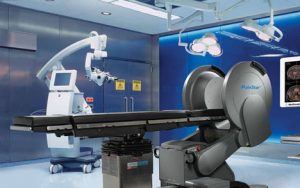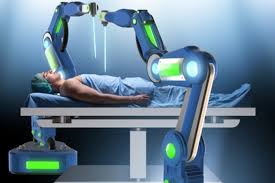Though it may be relatively small, the supraspinatus muscle plays a key role in providing stability, helping the  deltoid initiate abduction and also aiding shoulder rotation along with the other three muscles in the rotator cuff. The challenge comes in isolating the muscle so that it may be strengthened as a part of rehabilitation or injury prevention.
deltoid initiate abduction and also aiding shoulder rotation along with the other three muscles in the rotator cuff. The challenge comes in isolating the muscle so that it may be strengthened as a part of rehabilitation or injury prevention.
“While high muscle activation levels are often desirable, what’s more important is the relative activation of other muscles during the movement,” said Dr. Phil Page. “For example, Dr. Michael Reinold and colleagues suggested in their 2007 paper that a good rotator cuff exercise should produce the greatest supraspinatus activity while minimizing the deltoid activation. Theoretically, reducing deltoid activation decreases the upward shear of the humerus during arm elevation, which may be desirable when prescribing exercise to strengthen the supraspinatus in impingement patients.”
To decide once and for all which exercise is best for optimal for supraspinatus isolation and strengthening, researchers published in a 2009 issue of Medicine & Science in Sport & Exercise sought out to examine all exercises known to recruit supraspinatus at high levels and to compare the level of recruitment in supraspinatus, deltoid, and infraspinatus.
The shoulder showdown
Fifteen participants were hooked up with surface and intramuscular electrodes to take EMG recordings from the supraspinatus, infraspinatus, and the three parts of deltoid. The five exercises each subjects performed were:
Full can
Empty can
Prone elevation
External rotation with an elastic band
Prone external rotation
And the winner is…
Using the criteria that the best exercise to isolate and strengthen the supraspinatus should maximize supraspinatus activity while minimizing deltoid activity, the researchers determined that shoulder external rotation at 0° of abduction with an elastic band and prone external rotation were preferable. The research proved that there was:
No significant difference in the level of supraspinatus activation for all exercises
No significant difference in activation levels across all muscles during the “can” exercises
Significantly less deltoid activation during the external rotation exercises
Greater infraspinatus activation than supraspinatus during the external rotation exercises
“In summary, clinicians should consider using TheraBand® exercise bands for resisted external rotation and isotonic prone shoulder external rotation exercises because they preferentially activate the supraspinatus and infraspinatus without activating the deltoid, which may be more beneficial for patients with impingement.” (Boettcher CE et al. 2009).
Also worth noting is that these data and recommendations reflect a population with normal dominant shoulder function. A patient or athlete without healthy shoulder function may need addition help and rehabilitation before reaching this point. Mold your training programs to each individual’s abilities!
Source:
Boettcher CE et al. 2009. Which is the optimal exercise to strengthen supraspinatus? Med Sci Sports Exerc. 41(11):1979-83.

